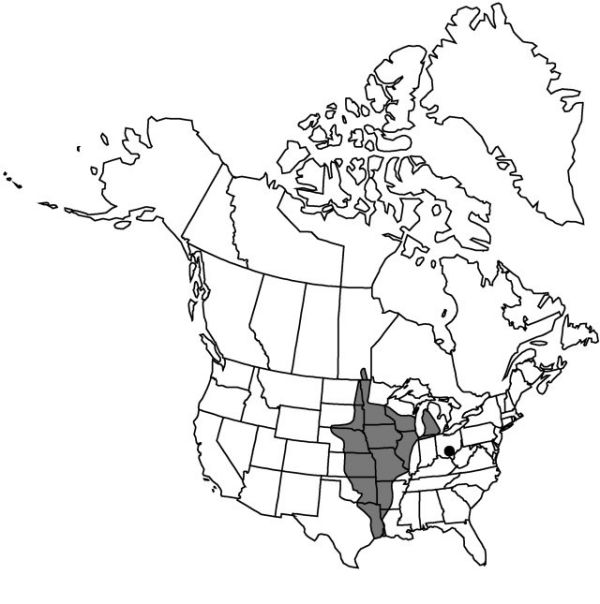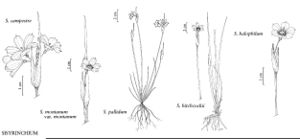Sisyrinchium campestre
Bull. Torrey Bot. Club 26: 341. 1899.
Herbs, perennial, cespitose, light green to olive or ashy olive, sometimes with purplish base when dry, to 4 dm, not glaucous. Stems simple, 1.2–2.5 mm wide, glabrous or scabrous, margins usually entire, similar in color and texture to stem body. Leaf blades usually glabrous, bases occasionally becoming fibrous but not persistent in tufts. Inflorescences borne singly; spathes green to purplish, glabrous or scabrous, keels usually entire; outer 22–50 mm, 10–32 mm longer than inner, tapering evenly towards apex or occasionally slightly constricted proximal to apex, margins distinct or rarely connate basally to 1 mm; inner with keel usually gibbous, hyaline margins 0.1–0.3 mm wide, apex acuminate to acute, ending 0.4–3.5 mm proximal to green apex. Flowers: tepals white to pale blue, bases yellow; outer tepals 7–12.7 mm, apex rounded to emarginate, aristate; filaments connate ± entirely, stipitate-glandular basally; ovary similar in color to foliage. Capsules light to dark brown, globose, 3–5 mm; pedicel spreading to ascending. Seeds globose to obconic, lacking obvious depression, 0.5–1 mm, granular to rugulose. 2n = 32.
Phenology: Flowering spring–early summer.
Habitat: Prairies, meadows, roadsides
Elevation: 20–500 m
Distribution

Man., Ark., Ill., Ind., Iowa, Kans., La., Mich., Minn., Mo., Nebr., N.Dak., Ohio, Okla., S.Dak., Tex., Wis.
Discussion
Selected References
None.
